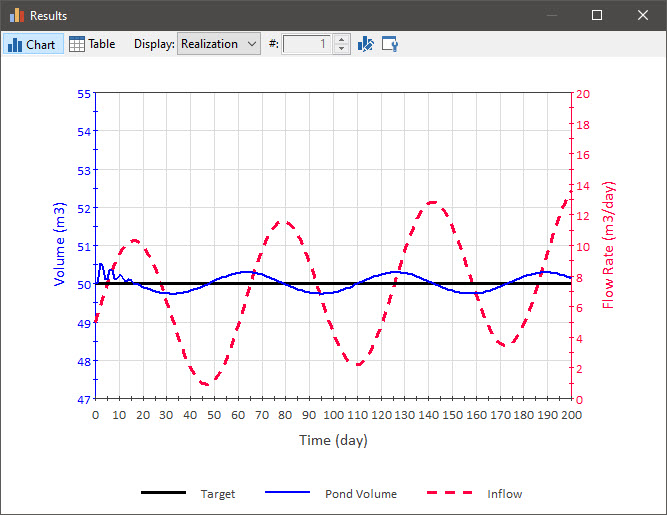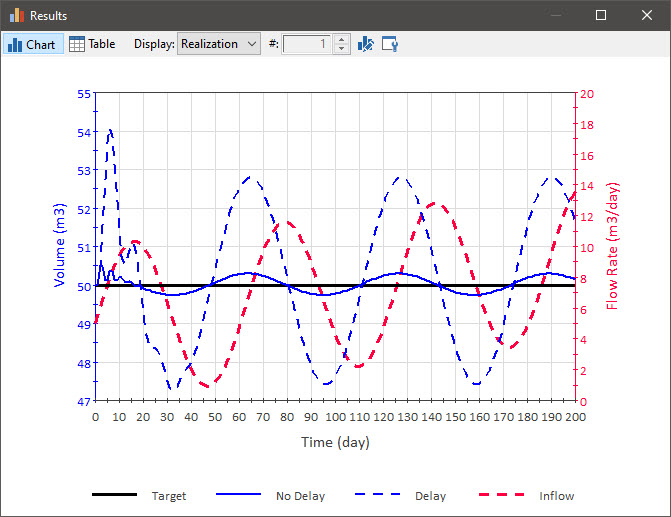Courses: Introduction to GoldSim:
Unit 9 - Representing Complex Dynamics: Delays
Lesson 7 - Interaction Between Information Delays and Feedback Loops
In the previous Lesson we introduced Information Delays. Why should we be concerned with these? Such delays can be important because decisions that you are simulating (e.g., adjusting a pumping rate) are based on reported values (e.g., a volume or water level), rather than the actual values. Hence, if there is a significant delay in reporting, this could have important impacts on the performance of a feedback control system.
To illustrate this, let's revisit on of the Examples we looked at in Unit 8. In particular, in Unit 8, Lesson 10 we looked at how a PID Controller (an Outflow Controller) responded to a fluctuating (oscillating and growing) uncontrolled inflow (Example7_PID_Controller.gsm). We saw that the Controller was able to do a good job of maintaining the volume near the target:

Let's open a slightly modified version of this model. Go to the “Examples” subfolder of the “Basic GoldSim Course” folder you should have downloaded and unzipped to your Desktop, and open a model file named Example14_PID_Delay.gsm. The model contains two Containers. One (named No_Delay) simply contains the exact same model as Example7_PID_Controller. The second (named Delay) contains that model with one change: instead of the process variable for the Controller being the pond volume, it is the output of an Information Delay (named Reported_Volume). This Information Delay has a Delay Time of 1 day (and zero Dispersion). That is, there is a 1-day reporting delay. The result (for both Controllers) is shown in the Results Time History Result element. Run the model and view the result:

As can be seen, the Controller with the delay performs much worse (note that this Controller is "tuned" differently than the other; that is, it has different values for the tuning parameters). This poorer performance should not be surprising. Since the Controller is using old information (and the uncontrolled inflow and hence the volume is changing significantly in that time), it is unable to properly track the target.
This simple example illustrates how a feedback control system that uses delayed information as the process variable can perform poorly. If indeed your system has such reporting delays, the Information Delay element allows you to properly represent this.
